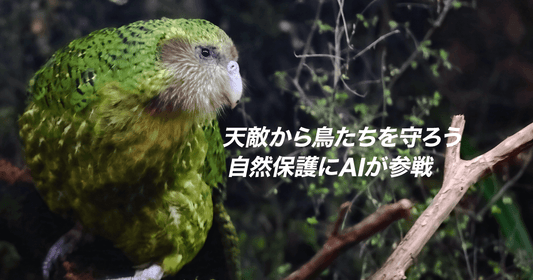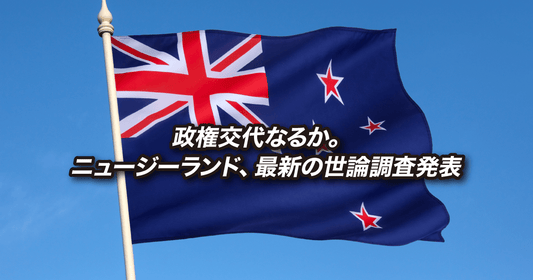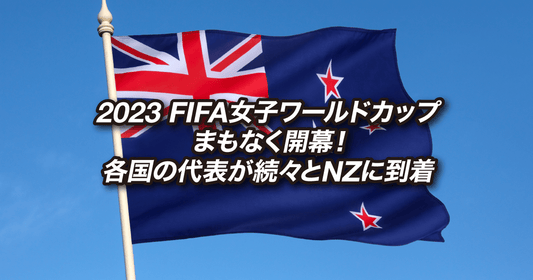
The New Zealand Department of Conservation, in cooperation with the Cornell Lab of Ornithology at Cornell University in the United States, is broadcasting live footage of albatross chicks in a nest at the southern tip of the Otago Peninsula on the South Island of New Zealand 24 hours a day on YouTube. In this March's Animal News, we bring you plenty of highlights from the broadcast!
Click here to watch the video. *This video is currently unavailable.
What is an Albatross?
The albatross is called "Ata-no -Hachimichi" in Japanese, which is a rather sad name. In English, it also has the nickname "Gooney bird" . It was named "Ata-no-Hachimichi" because it is less wary of humans than other birds and has poor landing skills. I hope that we will actively call it "Albatross" in Japan as well...
The one being streamed 24 hours a day is the largest albatross chick, known as the Northern Royal Albatross. Its wingspan is more than 3m!
Albatrosses usually build their nests on uninhabited remote islands, so New Zealand is the only place where breeding grounds are located on inhabited main islands. The area has an internet environment suitable for broadcasting, and is open to public visits, so it has the advantage of being easy to raise funds needed for conservation activities. By the way, this breeding ground has a long history, with the first albatross eggs discovered in the area in 1919. The first chicks were spotted in 1938.
The sex of the chick has been identified
The chicks being streamed this season were born on January 24th of this year. The eggs were protected by nature conservation officers before they hatched, and were immediately returned to their parents after hatching, and the streams began. Albatrosses raise their young together, so the father bird nurses the chicks on the first night after they are returned to the nest, and the mother bird nurses them on the second day.
Here we see the chicks being returned to the nest and protected by their mother.
After hatching, the chick's blood vessels remaining in the egg shell were subjected to DNA testing to determine its gender, and on March 9th it was announced that the chick was female.
#RoyalCam chick is a girl!!
— RoyalAlbatrossCam (@RoyAlbatrossCam) March 9, 2021
DNA analysis has confirmed that the chick and her nearby chick neighbors are female. This season there are 17 females and 15 males – with 1 unknown (TBC).
She is 44 days old & weighed a healthy 3.5 kg today. https://t.co/9A481yiiom pic.twitter.com/OlvMVN35zW
On this day, the baby was 44 days old. It had grown considerably, weighing 3.5 kg. It had grown to a size that was safe enough for it to be alone in the nest. In March, it is common to see chicks waiting for their parents alone in the nest.
In addition to the chicks being distributed this season, 36 chicks have hatched in the same area. Unfortunately, three of them have died, but there are 17 females, 15 males, and one chick under investigation. There are five more chicks than last season, and they are growing.
Landing disaster!
This was the most talked about scene in March, or rather since the series began streaming.
3/6 14:56
— RoyalAlbatrossCam (@RoyAlbatrossCam) March 6, 2021
Flying for the albatross is mainly effortless, landing can be a little bit harder. #RoyalCam chick had a front row seat to a 'how not to land' lesson.
Lucky for the somersaulting alby, recovery was quick and only the chick was watching!! https://t.co/9A481yiiom pic.twitter.com/WsPGdxsu1g
An albatross takes a spectacular tumble right in front of its chicks! It's adorable how it then gets up and starts walking as if nothing happened.
Here, the parent bird comes home with a big octopus leg. The baby bird desperately tries to eat the octopus, but it seems it's a bit too big. It ends up in the parent bird's stomach.
The future chicks are...
By the end of March, the chicks had grown to 5.2 kg. The conservation officers who came to weigh them also found it a little heavy to lift.
3/30 10:56 #RoyalCam chick is 65 days old & weighs 5.2 kg.
— RoyalAlbatrossCam (@RoyAlbatrossCam) March 30, 2021
Ranger Sharyn also advised the chick's down is now several cm's thick, adding to her bulk. The heaviest chick on the colony (male) weighed 6.5 kg.
How quick they grow. https://t.co/9A481yiiom pic.twitter.com/j59R1VWH8i
The chicks are now big enough to be alone in the nest, but it is expected that they will spend even more time alone in April. The parent birds will be away hunting for longer periods of time, and may not return for several days, or even if they do return, they will leave again within 10 minutes.
In March, they were seen stretching their wings and walking around the nest, but from now on, their range of movement will expand and they will be seen building nests outside the nest for play areas. Also, it is said that this is the time when the young albatrosses around them will start to bother them.
In May and June, after 100 days, the young birds will begin to show signs of gender and temperament, and will rapidly grow into adult birds. In July and August, they will begin to grow feathers and begin to prepare to leave the nest.
Here on Twitter we post daily highlights.
▶ RoyalAlbatrossCam Twitter account
The chicks will leave the nest in September or October. Just thinking about them leaving the nest makes me sad, but I want to keep watching over them until then, so that they will grow up healthy.





